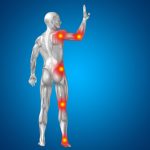
Contents
Catherine Zeta-Jones: Bipolar II Disorder
In April 2011, Academy Award-winning actor Catherine Zeta-Jones announced that she suffers from bipolar II disorder and is undergoing inpatient treatment for the illness.
What is Bipolar II Disorder?
Bipolar II disorder is a mental illness characterized by mood swings, from depression to moderate hypomania. It affects slightly more than 1% of the United States population, translating into millions of people. Individuals with bipolar II disorder are at risk for substance abuse.
How Common is Bipolar II Disorder?
Bipolar II disorder is thought to be more common in women and can occur in the postpartum period. Children and adolescents with bipolar II disorder experience rapid cycling, with at least four mood episodes in a year.
To qualify for the diagnosis of bipolar II disorder, individuals must experience at least one episode of major depression and one hypomanic episode during their lifetime. Symptoms of major depression include depressed or irritable mood, change in sleep or appetite, suicidal thoughts, low energy, tendency to isolate, and loss of interest in pleasurable activities. Hypomanic episode symptoms include elevated mood, decreased need for sleep, racing thoughts, trouble focusing, excessive activity, suicidal thoughts, and poor judgment for at least four days.
What Causes Bipolar II Disorder?
There is no single cause for bipolar II disorder. It is the result of a combination of genetic, psychological, and environmental factors. Stress is a significant contributor to the development of mental illnesses, including bipolar disorder.
Diagnosing bipolar II disorder involves gathering comprehensive medical, family, and mental-health information. Physical examinations and medical testing may be necessary to evaluate overall health and identify potential medical conditions with mental-health symptoms.
How is Bipolar II Disorder Treated?
The treatment plan for bipolar II disorder usually includes psychotherapy, medication, and social support. Medications like lithium, lamotrigine, and valproic acid are used to stabilize mood. Antidepressant medications may be used, but with caution due to the risk of hypomania or mania. In severe cases, electroconvulsive therapy (ECT) can be an option.
Psychotherapy plays a crucial role in helping individuals achieve optimal functioning. It addresses the complex social and psychological issues that affect work, home, and relationships. Effective therapies include family-focused therapy, psycho-education, cognitive therapy, and interpersonal therapy.
The prognosis of bipolar II disorder is linked to the frequency of mood episodes. The fewer episodes, the better the prognosis.
Reference: Merikangas, K.R., et al. "Specificity of Bipolar Spectrum Conditions in the Comorbidity of Mood and Substance Use Disorders." Archives of General Psychiatry 65.1 (2008): 47-52.


